
THE SNEEZE BEGAN AS A TICKLE IN MY RIGHT nostril. It was almost imperceptible, like a mosquito landing lightly on my arm, ready to strike. Or a lone butterfly flapping its wings, producing a breeze that would unfurl into a tornado; a tidal wave of latent energy that demanded to be unleashed.
Some people can suppress their sneezes delicately into a tissue. But not me. Mine are foghorn blasts that rattle windows and burst eardrums. Which wouldn't normally have been a problem, except that I was standing in the quiet Guatemalan jungle, and Alfredo Tol Gonzalez, my guide, thought he'd just heard a quetzal. Any noise would scare it away.
I'd staggered out of bed at dawn and hauled my camera gear up the side of a volcano for one reason only: to try to photograph the elusive resplendent quetzal, the national bird of Guatemala and one of six species of quetzal that live in the cloud forests of Central America. This iconic bird, with its iridescent green head and wings, spiky green crest, blood-red breast, and flamboyant twin tail plumes, is like the avian version of a carnival dancer. No visit to Guatemala is complete without seeing one in the flesh.
As I travelled around the country, I saw them everywhere. Quetzals woven into scarves and painted on walls. Varnished wooden quetzal toys, quetzal t-shirts, beaded quetzal keyrings. There's a quetzal on the national flag and on all the banknotes: the currency of Guatemala is called the quetzal. Even Guatemala's second largest city is called Quetzaltenango: the 'place of the quetzal bird'.
But its vivid plumage is not the only reason why the quetzal is Guatemala's favourite bird. It has also been profoundly intertwined with the country's history and religion for more than 1,500 years.
This story is from the {{IssueName}} edition of {{MagazineName}}.
Start your 7-day Magzter GOLD free trial to access thousands of curated premium stories, and 9,000+ magazines and newspapers.
Already a subscriber ? Sign In
This story is from the {{IssueName}} edition of {{MagazineName}}.
Start your 7-day Magzter GOLD free trial to access thousands of curated premium stories, and 9,000+ magazines and newspapers.
Already a subscriber? Sign In
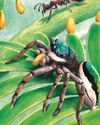
Jump Around - Bagheera Kiplingi - The acrobatic spider with a predilection for veggie food
Spiders eat flies, right? everyone knows that the 45,000 or so spiders in the world are all obligate carnivores, more or less – eating other animals, mainly invertebrates. Nature, however, loves an exception, and one particular spider missed out on that ecological memo. It goes by the wonderful scientific name of Bagheera kiplingi, and its claim to fame is that its diet is – at least mostly – vegetarian.
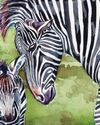
Female of the Species - Zebras - A strong sisterhood is key to staying safe
Zebras are masters of confusion. Their collective noun is ‘a dazzle’, which is fitting since their bodies and behaviour have been surprising scientists for centuries.
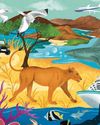
See It, Save It? - Wildlife tourism can be a powerful ally in protecting nature - but it can also harm it. We weigh up the pros and cons.
The sums of wildlife travel aren’t as simple as more tourists equals happier nature. How much did my visit really contribute to the conservation of Lady Liuwa and her habitat – and was that outweighed by carbon emissions from my flights? Did my presence disturb the animals’ natural behaviour more than it reduced the threat of poaching or benefited local communities?The question of whether wildlife travel is, on balance, good for wildlife is a complex one – and there’s no simple answer.

Can Your Really Offset Emissions? - Planning an overseas wildlife-watching trip entails facing some inconvenient truths
Imagine (or maybe you don't need to) that you hanker after the safari trip of a lifetime in sub-Saharan Africa. A 17-day tour beginning at the iconic Victoria Falls, passing through Zimbabwe, Zambia, Malawi and Tanzania, taking in some of the continent’s most wildlife-rich national parks, and ending on the lush island of Zanzibar.
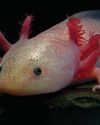
Metamorphosis: a life-changing event
WITH EVOLUTIONARY BIOLOGIST JV CHAMARY
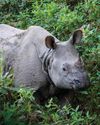
New series for BBC One: Asia
Settle in this autumn for a new natural-history extravaganza on BBC One and iPlayer: the longawaited Asia, presented by Sir David Attenborough.
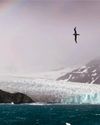
Loss of Antarctic sea ice could impact seabird food supply
Albatrosses and petrels may be forced to fly further to feed
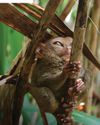
Tarsiers in trouble
Urgent action is needed to ensure survival of the Yoda-like primate

SNAP-CHAT
Chien Lee on shrew loos, rogue drones and being rained out of bed
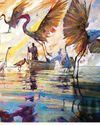
VISIONS OF NATURE
The winners of the Wildlife Artist of the Year competition 2024, from David Shepherd Wildlife Foundation